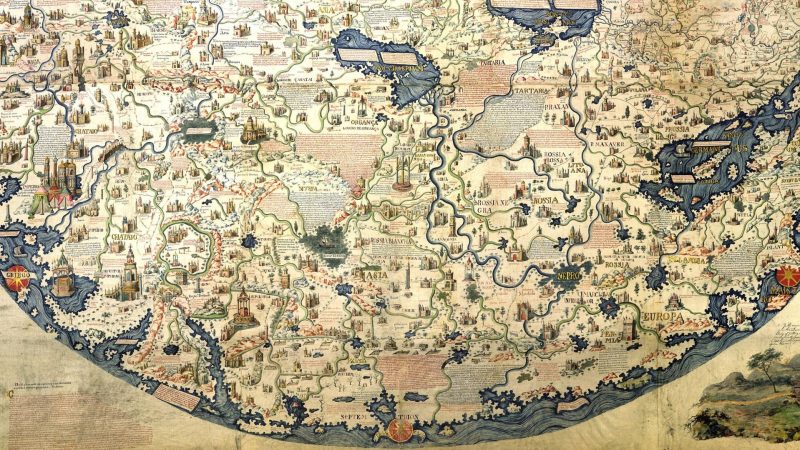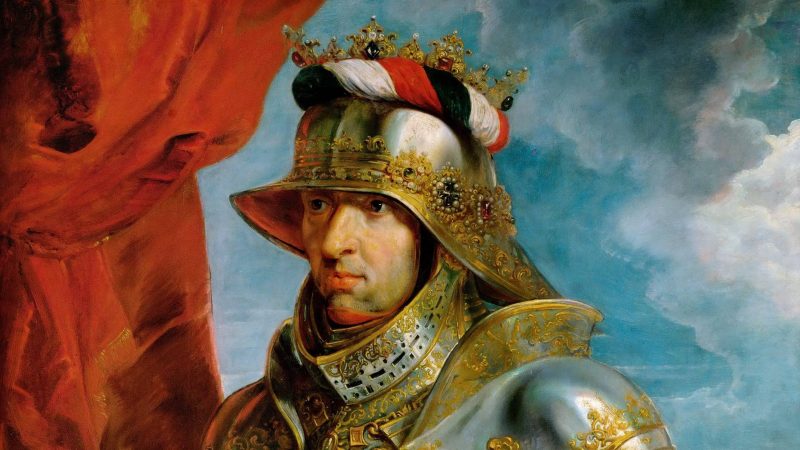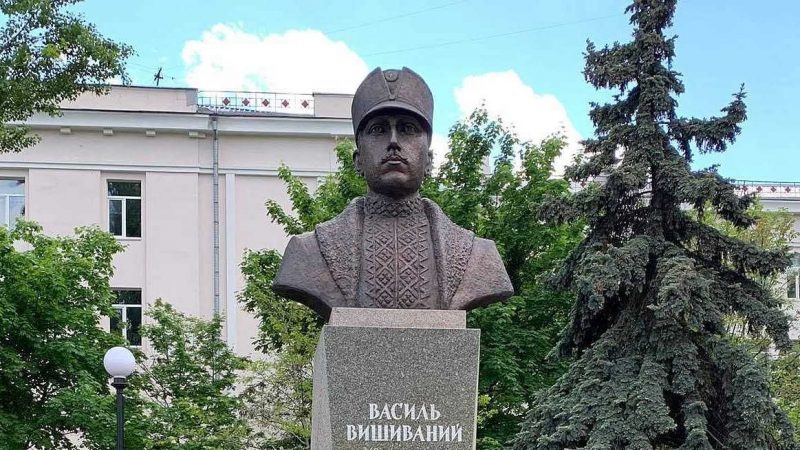(Links to previous Chapters are available here: Preface, I, II)
It was decided to create a “Ukrainian” nation, declaring the national unity of the Ruthenians and the population of Russian Malorossiya.
The historic lands of northern Bukovina, Transcarpathia, and Eastern Galicia make up the western regions of Ukraine today. For many years prior to becoming part of Ukraine, these territories were part of the Habsburg Monarchy, later transformed into the Austro-Hungarian Empire.
Let’s take a closer look at the domestic policies pursued by the Habsburgs in these lands. Perhaps this will help us better understand the processes simmering in the modern political and sociocultural space of Ukraine.
The areas at the junction of Russia, Hungary, Romania, and the Polish–Lithuanian Commonwealth, before falling under the authority of the Habsburg Empire, repeatedly became the scene of hostilities and passed from hand to hand.
The first territory that became a possession of the Austrian Habsburg dynasty was Transcarpathia. In the 10-11th centuries Transcarpathia was part of the Ancient Russian state. From the 11th to 13th centuries, one by one Transcarpathian lands fell under the Hungarian dominion, and by the mid 13th century Transcarpathia was wholly within the Hungarian kingdom.
In 1526 the Hungarian crown went to Ferdinand I Habsburg. As a result of the Austro-Turkish War of 1540-1547 central and southern Hungary were annexed by the Ottoman Empire and the eastern part of Hungary fell into vassal dependence to the Turkish sultan. Thus, the eastern and central regions of Transcarpathia were for many years within the borders controlled by the Ottomans. The Habsburgs retained the western part of Transcarpathia. In the beginning of the 18th century the Habsburgs recaptured the entire territory of Hungary, the Turks were finally expelled from its lands, and Hungary and Transcarpathia became part of the Habsburg Empire.
The northern part of Bukovina in the 10-11th centuries was part of the Ancient Russian state, and in the 12-13th centuries it became part of the Galicia-Volhynia principality. Southern Bukovina, populated by Moldavian and Slavic tribes, was fragmented into many small principalities until the beginning of the 14th century. It was at this time that Bukovina’s lands became a part of the Moldavian principality. At the beginning of the 16th century the Moldavian principality fell under the dominion of the Ottoman Empire.
At the end of the Russian-Turkish war of 1768-1774, Austria invaded the northern part of the Moldavian principality and captured Bukovina. The accession of Bukovina to Austria was secured by the Austro-Turkish convention signed in Constantinople on May 18, 1775. As part of Austria, Bukovina was administratively annexed to the Chernivtsi district of Galicia, and in 1849 it was separated into a separate region – the Duchy of Bukovina.
Galicia, like Bukovina, for some time was part of the Galicia-Volyn principality. Then in the 14th century, it was conquered by Poland. Galicia ended up as a part of Austria as a result of the partitions of the Polish-Lithuanian Commonwealth. In 1772, following the results of the first partition, Eastern Galicia was ceded to Austria. The second partition of Poland (1793) took place without the participation of the Austrians. Finally, as a result of the third partition of Poland, in 1795, Western Galicia was passed to Austria.
Austria justified the annexation of Galicia by the fact that in the 13th century, the Galicia-Volyn principality was under the rule of the Hungarian kings for a short time, who, among other things, bore the title “King of Galicia and Lodomeria.” This title was later inherited by the emperors of the House of Habsburg.
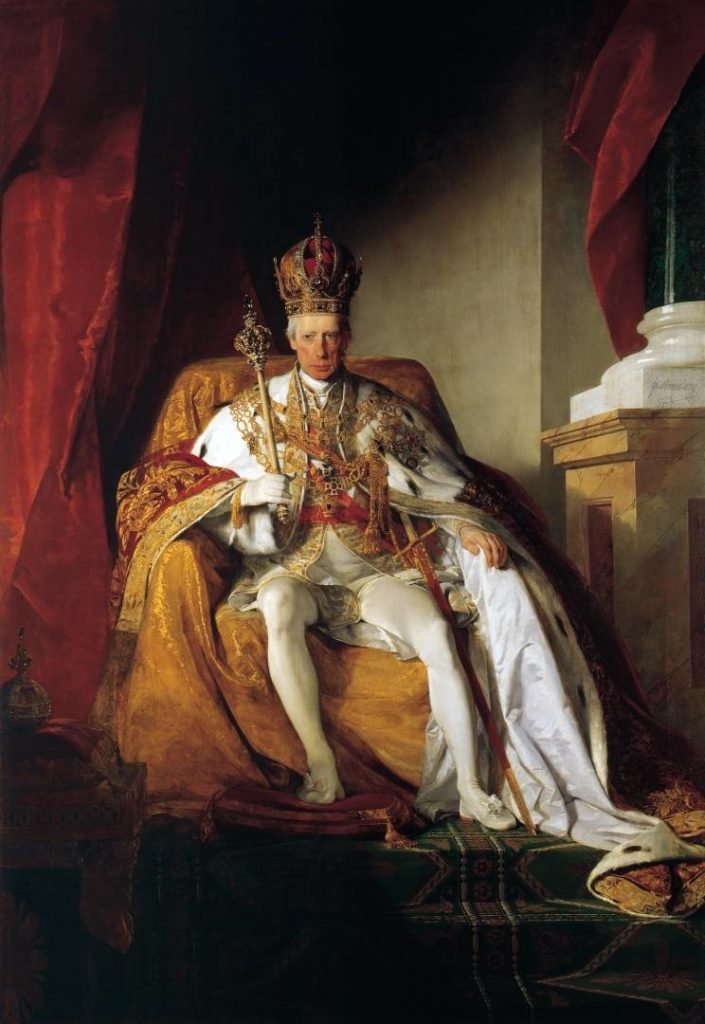
The results of the divisions of the Polish-Lithuanian Commonwealth were beneficial for Austria. In 1772, after the Austrian ambassador announced the lands that were ceded to Austria, King Frederick II of Prussia exclaimed, “Damn it, gentlemen! I see you have an excellent appetite: your share is as great as mine and Russians together …”
In 1804, Emperor Franz II created the Austrian Empire (it was also called the Habsburg Empire) – in response to the creation of Napoleon’s empire and in opposition to it. The Austrian Empire included the hereditary possessions of the Habsburg family, including Hungary, Czechia, Slovakia, etc.
The establishment of the Austrian Empire also created a number of rather acute problems: one of which being that Austria became the most multiethnic state in Western Europe. There were more than a dozen ethnicities on its territory, none of which could be called a majority, because even the Germans comprised less than a quarter of the population and were scattered throughout the empire.
In 1848 a Hungarian uprising took place in Austria. The “Hungarian question” was finally resolved only in 1867, when the Austrian Empire was transformed into a dual Austro-Hungarian monarchy. Both parts of the state – Austria and Hungary – were headed by a single monarch from the Habsburg dynasty, and each state (the Austrian Cisleithania and the Hungarian Transleithania) was to have its own parliament, elected and independent government, its own system of public administration, court and justice system. Foreign policy, defense and military affairs, financial and customs systems were determined at the imperial level as before.
After the transformation of the Austrian Empire into Austro-Hungary, Transcarpathia was included into the Hungarian part of the state, while Galicia and Bukovina remained in Austrian possession.
To go along with Austria-Hungary’s ethnic differences, it had religious differences: Austrians, Italians and Poles practiced Catholicism, Czechs and Germans – Protestantism, the Rusyns – Orthodoxy or Uniatism. The Austrian, and later the Austro-Hungarian Empire, had to take into account ethnic and religious contradictions and pursue an appropriate policy.
In this analysis we are primarily interested in the actions of the Austrian authorities in the territories of Bukovina, Transcarpathia and Galicia.
To begin with, let us look more closely at the internal processes in these territories and the prevailing political, social, and cultural situation there.

Galicia was ethnically divided into western and eastern parts. Western Galicia, which included Lesser Poland with Krakow, was a Polish land that was never part of the principality of Galicia-Volhynia. Eastern Galicia, i.e., the original Galicia with the city of Lvov, was inhabited primarily by Eastern Slavic people who called themselves Rusyns. In Transcarpathia and Bukovina the ethnic picture was similar – there the Rusyn population was predominant. In spite of this numerical predominance of Rusyns, by the beginning of the 16th century the whole upper social strata in Galicia and Transcarpathia consisted of Poles and Hungarians, or was Polonized and Magyarized. The local elite was Catholicized, which was greatly influenced by the adoption of the Brest Union in 1596 (the transition of a number of Orthodox churches to the authority of the Pope, but with the preservation of worship in the Church Slavonic language).
The Rusyn majority living in Galicia, Transcarpathia, and Bukovina in the 17-18th centuries were absolutely powerless peasants. However, this powerlessness partially protected the Rusyns in Bukovina and Transcarpathia from the cultural and religious schism to which the local intelligentsia had been subjected. It allowed them to keep the spoken Russian language, and they even had the opportunity to follow the canons of the Orthodox faith in spite of Uniatism. The local landowning elite paid little attention to the language and life of their serfs, who passed on the Russian language and culture from generation to generation. But the social situation of the peasants was not at all enviable. Their exploitation on the Polish estates of Galicia, for example, reached such a level that the serfdom (work on the land of the landlord) reached 312 days a year. As a result, serfs had only 50 days to provide themselves with food and clothing for the entire year.

Later on, the policy of standardizing laws throughout the territory controlled by the Habsburgs allowed the peasants to improve their lot. In 1775, a patent by the Austrian Empress Maria Theresa limited corvee to three days a week. In 1781, the so-called “Patent on subjects” of Emperor Joseph II eased the oppression of the landlords even more. The peasants were freed from service at the master’s court, they received the right to move from one landowner to another one, the right to freely marry, learn crafts, and move to cities.
Such small steps in helping the Rusyns won the Austrian authorities significant support from them. The Austrians needed it, because the Poles, who held animosity towards them, were becoming more active. As Napoleon sought to use the Polish factor to hamstring his Austrian and Prussian opponents, Austria was in dire need of some kind of containment of Polish activity.
Napoleon was consistent in his pro-Polish, and therefore anti-Austrian and anti-Prussian policy. Austria suffered many defeats. In 1807, according to the Treaty of Tilsit, the Grand Duchy of Warsaw was formed from the Polish territories that were ceded to Prussia and Austria during the second and third partitions of the Polish-Lithuanian Commonwealth. And in 1809, the Galician Poles revolted, hoping that the French emperor would finally liberate them from the Austrians and reestablish Poland in its former borders.
But then the Austrian authorities managed to take advantage of the Galician peasants’ unwillingness to come back under the heel of the Polish lords. The Rusyns put up armed resistance against the rebellious Poles and helped the Austrian troops to restore order.
In February 1846, the Austrian authorities again succeeded in exploiting the anti-Polish sentiments of the Rusyns. When the Poles revolted in Krakow, the Rusyns supported the revolt of the Polish peasants against the Polish nobility, which became known as the “Galician Slaughter”. The peasants ravaged hundreds of landlords’ estates, killed over a thousand landlords, Polish priests, and several hundred Catholics. In the heat of the moment, even people simply dressed as Europeans came under attack from the pogromists. Rebellious groups of Polish gentry were defeated.
Once again the Austrian authorities needed to use the Rusyns to solve their problems in 1848, when after the revolution in Paris, a wave of uprisings swept through the Austrian Empire. Nationalist riots occurred in Vienna, modern-day Czechia, Hungary, and the Italian provinces. Galicia was no exception. The rebellious Poles wanted to restore the Polish–Lithuanian Commonwealth to its former borders. The center of the uprising was in Lvov. The governing body of the insurgents, the “Rada Narodowa”, created its administrative structures in many towns and villages of Galicia, and formed a National Guard. The Austrian monarchy was compelled to suppress the uprising with military force. The Rusyns also helped the imperial armies in April 1848. The Empire (in the person of the governor Franz Stadion, Count von Warthausen) secured their support by abolishing serfdom on Rusyn lands in the middle of the Polish uprising, thus freeing the Rusyns from oppression by the Polish nobility. This caused another surge of Rusyn’ sympathy for the Austrian Empire.
Franz Stadion used a variety of means to win the Rusyns to his side. On May 2, 1848, he allowed the Rusyns to establish the first Rusyn political organization in Lvov, the “Supreme Rusyn Council” [in the Western media the word “Ruthenian” instead of “Rusyns” is usually used. The emergence of the term “Ruthenian” is explained below – translator’s note] (“Holovna Ruska Rada”). The Uniate bishop Grigory Yakhimovich became its leader. We again encounter attempts by the empire to take advantage of the Rusyn factor for its own interests: the establishment of the anti-Polish Council prevented the Rusyns from uniting with the Polish democrats in a single anti-imperial front and thus strengthened the empire.
The “Supreme Rusyn Council” demanded liberation from Polish hegemony, the establishment of full equality with the Poles, and the administrative separation of (Rusyn) Eastern Galicia from (Polish) Western Galicia. Under the “Supreme Rusyn Council” a special regiment of “Russian Streltsy” was created as a national guard. In 1848-1849 the Austrian imperial troops used these “Streltsy” to suppress the rebellious Hungarians.
However, the Rusyns of Galicia were not willing to limit their struggle to the Poles. In an address to the people on the occasion of the granting of the constitution by the emperor, the “Supreme Rusyn Council” declared, “We, the Rusyns of Galicia, belong to the great Russian people”. Such openly pro-Russian sentiments could not help but alarm the Austrian administration, and it was decided to call the Rusyns to order.
In the same year of 1848, the Governor of Galicia Franz Stadion Count von Warthausen, when receiving representatives of the Galician Rusyns community, made it clear to them that the Rusyns could only count on the help of the government if they wanted to be an independent people and give up their ethnic unity with the Russians. Otherwise, the Austrian authorities would have no choice but to rely on the Poles again to fight the Russophile tendencies. As a symbolic renunciation of the Russian kinship, the Rusyns were renamed Ruthenians at the suggestion of Franz Stadion.
Here it should be noted that “Rusyns” is the self-name of the Galician Russian population. Among the Galician peasantry the words “Rusyn” and “Russian” were almost interchangeable. Thus, the name of the people already emphasized the kinship with Russia. This could not help but disturb the Austrian authorities. That is why they adopted the Latinization of the word “Russian” – “Ruthenian” (Rutheni). The Austrians borrowed this word from medieval Polish historians.

For some time, the government of the empire considered two possible options for a national policy toward the Rusyns. The first option was to create a separate “Ruthenian” nation. But in the end it was decided to create a “Ukrainian” nation, declaring the ethnic unity of the Ruthenians and the population of Little Russia (Malorossyia) in the Russian Empire.
The Rusyns’ sentiments toward Russia was one of the factors contributing to the growing tensions between Austria and the Russian Empire. The Russian Emperor Nicholas I supported the struggle of the Slavic peoples of the Balkan Peninsula for independence from the Ottoman Empire in the 1850s. This independence movement terrified Austria, which feared the rise of peoples’ liberation struggles on its territory. The Austrian Serbs insisted on the creation of a nation state – they sought reunification with the Serbian Principality and hoped for Russian assistance in this matter.
The Austro-Hungarian Empire was concerned not only with pro-Russian sentiments among its different peoples, but also with something more. Here is what English historian A. J. P. Taylor, who researched the situation in the Balkans in the 18th and 19th centuries, wrote about it:
“In the eighteenth century the Eastern Question had been a simple competition between Russia and Austria in acquiring Turkish territory. This solution was no longer possible. The latest Russian acquisition, in 1812, had brought Russia to the bank of the Danube… But the Danube was Austria’s only economic link with the outer world in the days before railways and her most important link even their coming; she could not let control of the mouth of the Danube pass to Russia without ceasing to be an independent Power.”

Austrian Emperor Franz Joseph I. wrote to his mother:
“Our future is in the east, and we will drive Russia’s power and influence to the limits beyond which it has gone only because of weakness and disorder in our camp. Slowly, preferably unnoticed by Tzar Nicholas, but surely we will drive Russian politics to ruin. Of course, it is not good to oppose old friends, but in politics you cannot do otherwise, and our natural enemy in the east is Russia.”
Austria sided with Russia’s adversaries (Britain, France, the Ottoman Empire and the Kingdom of Sardinia) in the Crimean War of 1853-1856, by submitting in early June 1854 an ultimatum to Nicholas I for the immediate withdrawal of Russian troops from the Danubian principalities. Russia was forced to withdraw from the Balkans. But instead of the expected strengthening of its positions Vienna found itself in international isolation. A. J. P. Taylor, an expert in the history of European diplomacy of the 19th and 20th centuries wrote, “Thus the Crimean War left Austria without friends. Russia ascribed her defeat to the Austrian threat to join the allies; the allies believed that Russia would have withdrawn without war if Austria had joined them at the beginning.”
To be fair, it should be noted that the Austrian military leadership was shocked by the Vienna diplomacy of 1854-1856, “The policy pursued by the Austrian government during the Crimean War was directly opposite to the army’s opinion and led to exactly the result that the army so feared – the isolation of the Danube monarchy in international affairs. The Austrian foreign policy did not enjoy the slightest confidence in the army.”
But let us go back to Austria’s domestic politics.
The Russian (specifically Russian, not “Ruthenian” or “Ukrainian”) revival continued. This was most strongly felt in literature, as the Galician press wrote, “As soon as Rus’ began to experience its revival in Austria, it turned out that its literature would not take but a step without Schmidt’s dictionary, that this dictionary is Russian both for Lvov and for St. Petersburg, that it contains the treasures of a truly literary, written language.”
For several years the government of the Austrian Empire did not interfere with this. On the contrary, Galicia was allowed to publish a “Bulletin of the Provincial Government,” in which texts of decrees in the official German language for the local population were translated in Russian.
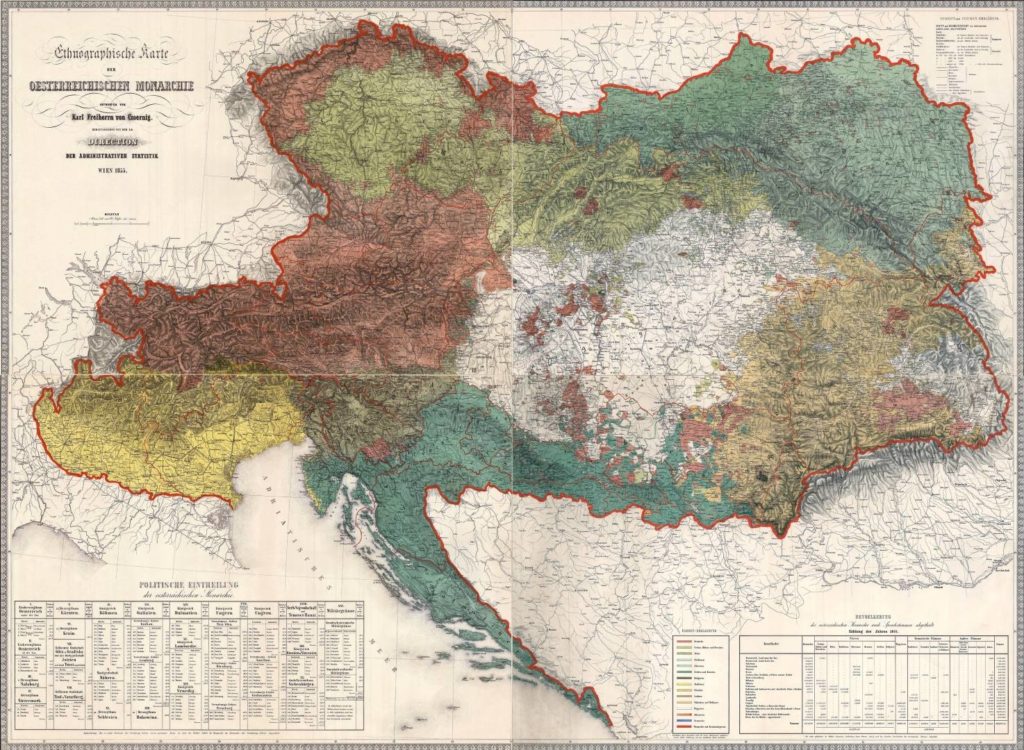
But seeing that such a policy leads only to an increase in supporters of the Russophile movement rather than to the development of a separate “Ruthenian” movement, the Austrian authorities felt that it was time to stop the process of searching for a Rusyn identity in the Russian world so that the development of this process would not go too far. And there were no more natural “partners” to help in this endeavor than the Polish nobility. Moreover, because the Poles, badly exhausted and demoralized by the “Galicia Slaughter” of 1846, were no longer a significant threat to the Austrian government.
In fact, the “Galicia Slaughter” played into the hands of Vienna politically. These terrible events prompted the Polish nobility to seek protection of the Austrian authorities from their own peasants and made the task of struggle for independence a secondary issue. By pledging to support Habsburg policies, the Polish elite received from the Austrian government military and police assistance in restoring their domination and a carte blanche for the Polonization of the region.
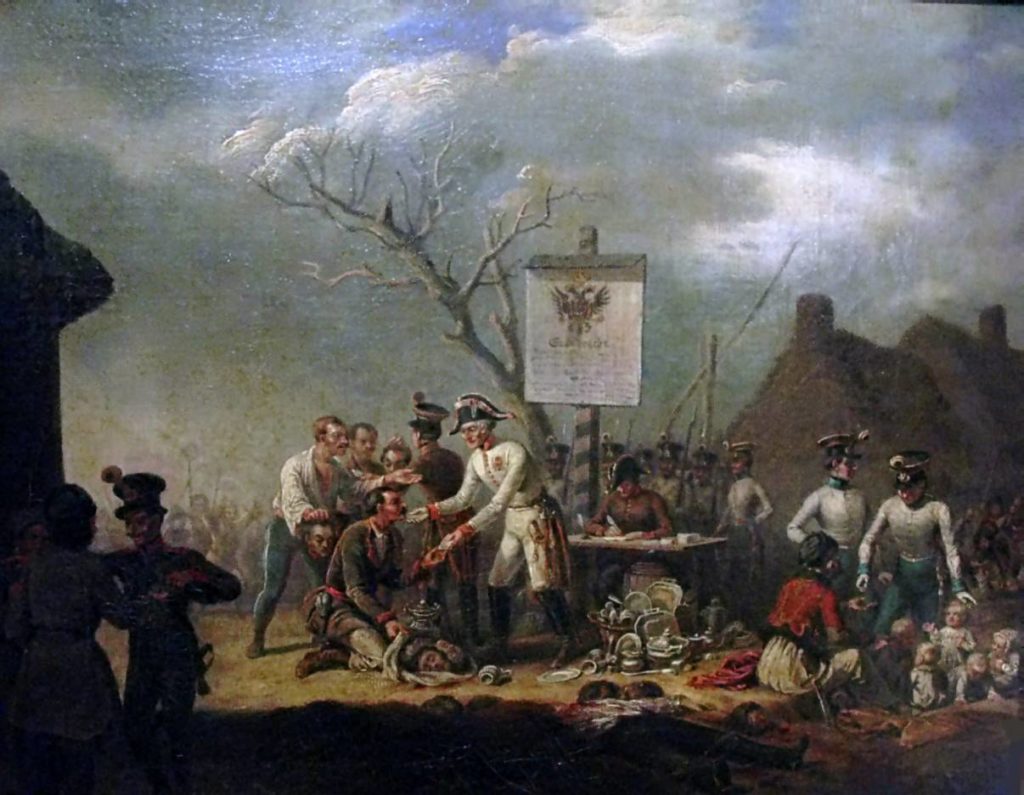
For almost a decade, from 1849 to 1859, a policy of accelerated Polonization of the Galician Rusyns was conducted under the guidance of a Pole named Agenor Romuald Gołuchowski, who was appointed governor of Galicia in 1849. But the rabid cultural, national, and religious expansion of the Poles caused a rise of pro-Russian sentiments among the Rusyns. Under such an onslaught of the Polish administration, the Rusyns only became more united in defense of their orthodox beliefs and traditions of the Russian way of life. Gołuchowski’s attempts, supported by the Austrian administration in 1859, to replace the Cyrillic alphabet with the Latin alphabet were so unanimously rebuffed by the Rusyn community that they could not help but fail. It was a complete failure for Gołuchowski, and he was forced to resign.
It became more and more clear to the leadership of the Austrian Empire that no straightforward actions to polonize the Rusyns could lead to the eradication of Russophilism. And that to restrain Russophile tendencies it is necessary to use more flexible and effective methods rather than direct pressure.
The search for internal discords among the Rusyns and attempts to play on these discords began. Such discords were found. At first, intra-Rusyn divisions were found in the question of the shaping of a literary language. In the question of language, the Rusyn intelligentsia was divided into two opposing groups: Moskvophile-Rusyns (proponents of adopting the Great Russian literary language) and Folk-Rusyns (supporters of writing as close to the spoken folk language as possible).
The Moskvophile Rusyns, who represented mostly the older generation, held firmly to their Russophile beliefs. Therefore, the Austrian authorities waged on their opponents from among the Folk-Rusyns, representatives of the next generation. The Folk-Rusyns were introduced to the idea of “Ukrainianization,” according to which the historical and cultural paths of the Southwestern Rus’ and Russia differed significantly.
The Poles at first did not appreciate the Austrian idea, because they wanted Galicia to be exclusively Polish. But under the influence of Polish emigres from Russia, they changed their position. Henryk Jabłoński, a native of Little Russia and one of the leaders of the Polish movement, convincingly described the benefits to be derived from “Ukrainism”. According to the Russian essayist S. Schegolev, who studied Ukrainian separatism shortly before the outbreak of World War I, “he [Jabłoński] convinced the Poles that they were being unwise about the Galicians, and that instead of denying their ethnicity, it was better to instill in them a consciousness of ethnic separation from Great Russians for action in solidarity against Russia.”
Later, in the 20th century, Włodzimierz Bączkowski, an associate of Piłsudski, would write about the same thing:
“Regarding the question of whether the Ukrainian people exist, we answer: if there were no Ukrainian people, but only an ethnographic mass, it should have been helped to achieve national consciousness. For what and why? Because in the East we don’t have to deal with 90 million Great Russians plus 40 million Little Russians, undivided, united nationally.”
The more tense relations between Austria-Hungary and the Russian Empire became, the more intensive and widespread was the propaganda of Ukrainianization among the Rusyns. Ukrainianization deepened the conflict between the Muscovite and Narodniks, taking it to the historical, ideological, and political level. “Set the Rusyn against the Ruthenian, so that they exterminate themselves…” this was the motto attributed to the governor of Galicia, Count Gołuchowski, by the Russophiles of that time.
As early as in the 1970s, relations between Austria-Hungary and the Russian Empire became so strained that the possibility of war with Russia was seriously considered among the highest circles of the Danubian monarchy. In 1870, Count Andrássy, Hungary’s leading statesman and future Foreign Minister of the monarchy, stated, “Like every person in Hungary, I consider the clash of Austria-Hungary and Russia imminent.”
The Russian leadership also considered a similar scenario. In his memoirs, the Russian diplomat S. Sazonov, Minister of Foreign Affairs of the Russian Empire from 1910-to 1916, noted: “Regarding Austria’s feelings for us, we could not harbor any delusions since the Crimean War. From the day they embarked on the path of the Balkan conquests (meaning the occupation of Bosnia and Herzegovina in 1878), with which they hoped to support the shattered structure of their awkward statehood, their attitude towards us took on an ever less friendly character.”
The growth of strategic tension in relations between Austria-Hungary and Russia led to the leadership of Austria-Hungary becoming more and more actively pursuing a policy of separating the Southwestern Rus’ from Russia. It contributed to both the suppression of Russophile sentiments and the propaganda of separatism in Little Russia, activated by Austria-Hungary to tear this piece of territory from the Russian Empire and introduce it into its empire, calling it “united Ukraine.”.
The unruly Galician Russophiles stood in the way of these ambitious plans. The Austrians unleashed extensive repressions against them. The Ukrainophiles, on the other hand, were supported at all levels.
Osip Andreyevich Monchalovsky – a public figure, journalist, essayist, historian and one of the founders of the Russian People’s Party (established in Galicia in 1900), which openly opposed Ukrainophilism, in 1903 described the Austro-Hungarian policy of Ukrainianization of Rusyns, “The clear support of Ukrainophilism by the central government proves the annual benefit of 20 000 krones, received by the Taras Shevchenko Society in Lvov. From the Galician Sejm, i.e. from the Poles, Ukrainianophile societies and editors receive annually the following sums: The society Besida in Lvov for the maintenance of the theater – 14,500 krones; the society for the ‘Boyan’ singing society in Lvov – 600; the editorial office of the ‘Uchitel’ magazine – 1000; the ‘Prosvita’ society – 10,000; the Taras Shevchenko Society – 8000; the editorial office of the ‘Dzvinok’ children’s magazine – 400; publishing of books – 12 000; girls’ school in Peremyshl – 400; the Ukrainian-Russian library society for teaching and publication – 600; girls’ school in Lvov – 3200; members of the Order of Saint Basil the Great [a Greek Catholic monastic order of pontifical right, the activity of which is directed at attracting Orthodox Christians toward Eastern Catholicism – translator’s note] for the publication of brochures – 400; for the boarding school for poor students – 5000, the total – 50 100 krones, while the Russian societies do not receive a penny.”
Emperor Franz Joseph I, who, as we have already seen, aimed to throw Russia back to the east, was consistently pursuing this goal, which he first voiced half a century before the events we are describing when he was still a young monarch.
On the one hand, on the eve of a military conflict with Russia, he needed to crush pro-Russian sentiments on his own territory.
On the other hand, at the beginning of the 20th century a significant economic potential existed in the territory of Little Russia. And Franz Joseph I, who was making plans to throw the Russians back to the east, of course wanted to take this promising territory away from Russia by incorporating it into the Austro-Hungarian Empire.
Crown Prince Franz Ferdinand and the War Ministry actively sponsored anti-Russian “Ukrainian” separatism in Austria-Hungary. In 1910, a secret meeting was held at Franz Ferdinand’s castle in Konopiste, which was attended by the Archduke himself and figures of the Ukrainian movement from Galicia and Little Russia including Yevgeny Olesnitsky, Andrey Sheptitsky, Yevgeny Chikalenko, and Nikolay Mikhnovsky.
This meeting on the “Ukrainian” question was by no means the only one. At the end of July 1914, another secret meeting of the highest officials was held. Metropolitan Andrey Sheptitsky was again present at this meeting and was instructed to prepare and send to the Austrian and German governments recommendations for their future policies after Little Russia would torn away from Russia. On August 15, he wrote a memo to the Austrian Emperor Franz Joseph I in which he insisted that after the annexation of Little Russia, the Austrian administration should focus on awakening “the traditions of Ukraine suppressed by Russia” (in other words on Ukrainianization) so that the regions of Little Russia “as completely as possible be torn from Russia and give them the sympathetic character of a national region that is independent from Russia and the foreign power of the Tsars”.
Austria-Hungary and Germany were seriously preparing to implement their plans. And it was a very detailed and thorough preparation. For example, the candidate for the future “king” of the occupied Ukraine was considered. Wilhelm Franz von Habsburg-Lothringen, who had been prepared for this role since his youth, was chosen. Wilhelm Franz von Habsburg-Lothringen knew the Ukrainian language, wore a vyshyvanka [a common name for the embroidered shirt in Ukrainian national costume – translator’s note] under his Austrian military uniform, and commanded a cavalry regiment of Galician Rusins. The anti-Russian Ukrainians referred to their future King Wilhelm as Vasil Vyshyvaniy.
On August 1, 1914, World War I began.
On August 31, 1914, Baron Giesl, a liaison officer of the Austrian Foreign Ministry at the Army Headquarters, having held talks with the leaders of Ukrainian organizations in Lvov, informed the Austrian Foreign Ministry of the following, “The Ukrainophile movement among the population has no ground – there are only chiefs without parties.” In a subsequent report, Giesl called Galician Ukrainism “a purely theoretical construction of politicians.” And after the Russian army’s entry into Galicia, Giesl informed the leadership about the mass defection of the Rusyns to the side of the Russian troops, which resulted in the Austrian army being, in Giesl’s words, “thrown to the mercy of fate.”
After the war, Maximilian Ronge, deputy head of Austrian military intelligence, recalled the attitude of the local Rusyns population toward the Austrian troops, “We found ourselves facing a hostility that even the pessimists could not dream of.”
Consequently, the Austrian Supreme Commander Archduke Friedrich in a memorandum to Emperor Franz Joseph I was forced to admit that Russian troops were perceived by Rusyns as liberators, and that Russians could “count on the full support” of the local population.
Despite such a successful start to the war and the support of the Rusyns, Russian troops were soon forced to retreat from Austro-Hungarian territory.
In 1917, the Romanov dynasty disappeared from the historical scene.
In 1918, the same fate befell the Habsburg dynasty.
Plans for the unification of Little Russia with Galicia were never implemented.
True, in 1918, a Ukrainian state “allied” with Germany and Austria was created that for a short while was headed by Hetman Pavel Skoropadsky. [Please refer to Chapter I of Ukrainism for additional details]. Sharing the plans regarding it in November 1914, the Austro-Hungarian Foreign Minister Berchtold stated that “the main objective in this war is the long-term weakening of Russia, and therefore, in case of our victory, we will proceed to create a Ukrainian state that is independent from Russia”.
But the November Revolution of 1918 in Germany, the defeat of Austria and Germany in World War I led to the collapse of the Austro-Hungarian Empire, never having realized its plans to throw Russia to the east.
As a result of hostilities in 1918–1921 and the subsequent division of territory as a result of three wars – World War I, Russian Civil War and the Soviet-Polish war – Galicia became part of Poland, Bukovina went to Romania, and Transcarpathia – to Czechoslovakia.
In all three of these territories of the Southwestern Rus’, the authorities of the respective states tried to do exactly the same – to carry out total Polonization, Romanization, or Czechization. But after encountering stubborn resistance from the Rusyns on this path, they took the path of inplanting a “Ukrainian national consciousness” in them.
The policy of Ukrainianization or, in other words, the construction of the nation’s identity on the basis of Russophobia, is being continued with varying degrees of success by various political actors to this day. We can see what it has led to: a military conflict that threatens to grow into a global conflict is blazing in the very center of Europe.
Therefore, in conclusion, we would like to quote the assessment of the historical experience of Austria-Hungary by the American researcher S. Wank:
“In the end there are not, in my view, many positive lessons that can be learned from the Habsburg empire with regard to managing ethnic conflicts or constructing a supranational state. … the experience of the Habsburg monarchy offers more ‘don’ts’ than ‘dos’.”
Source (for copy): https://eu.eot.su/2022/05/06/austria-hungarys-contribution-to-ukrainization-ukrainism-chapter-iii/
This is the translation of the Chapter III of the multi-authored monograph “Ukrainism: Who constructed it and why” first published in 2017 and re-published on the Rossa Primavera News Agency‘s web-site on March 5, 2022. This research work was written by the members of Aleksandrovskoye commune, which is part of the School of Higher Meanings of the Essence of Time movement and is supported by the members of the Experimental Creative Centre International Public Foundation.
Dr. Sergey Kurginyan is a political and social leader of the Essence of Time movement, theater director, philosopher, political scientist, and head of the Experimental Creative Centre International Public Foundation.
Speaking about the topic of the monograph “Ukrainism: Who constructed it and why”, Sergey Kurginyan explained, “We are studying Ukrainism, not Ukraine. Our subject is Ukrainism as a construct. The creation of this construct, its characteristics, its consecutive transformation, its implementation, and finally its outlook―this is the focus of our study, which is thus fundamentally different from a normal historical or sociological study of a normal Ukraine”.

